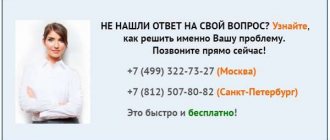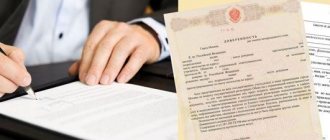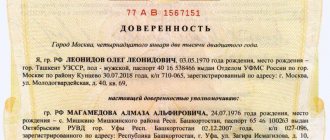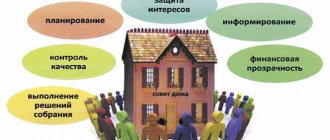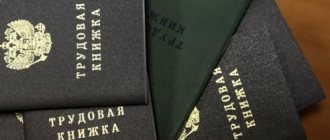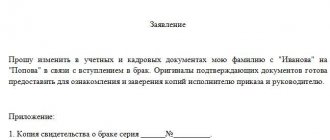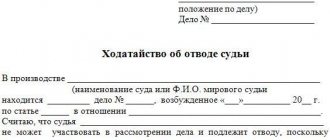Meeting of co-owners of housing in an apartment building
The Housing Code prescribes the rules according to which fees for owners of square meters are carried out:
- annually according to the approved plan;
- at the request of the owners themselves;
- at the will of the Criminal Code.
General meetings of the owners of an apartment building are held to resolve important issues related to its life. After all, it is extremely difficult to find out the opinion of each resident in a different way and to obtain consent from him to carry out certain events. For this purpose, thanks to the efforts of the Management Company, a register of owners is maintained.
Dear readers!
Our articles talk about typical ways to resolve legal issues, but each case is unique. If you want to find out how to solve your specific problem, please contact the online consultant form on the right →
It's fast and free!
Or call us by phone (24/7):
If you want to find out how to solve your particular problem, call us by phone. It's fast and free!
+7 Moscow,
Moscow region
+7 Saint Petersburg,
Leningrad region
+7 Regions
(the call is free for all regions of Russia)
At all general meetings there must be:
- head (manages the collections);
- secretary;
- quorum (at least half of the residents of the house);
- invited participants (employees of the management company, administration, deputies, etc.).
According to the norms of the Housing Code of the Russian Federation, decisions of the general meeting of owners are issued in the form of minutes. We fill out the form, as a rule, using standard forms. Although there are no generally mandatory requirements for such paper. Under any circumstances, the document is signed at the general meeting by the secretary, chairman and members of the commission.
A properly completed protocol contains the following information:
- registration of assembled residents;
- Chairman's opening speech;
- consideration of points that are on the agenda;
- analysis of questions from meeting participants;
- summing up and closing speech of the chairman.
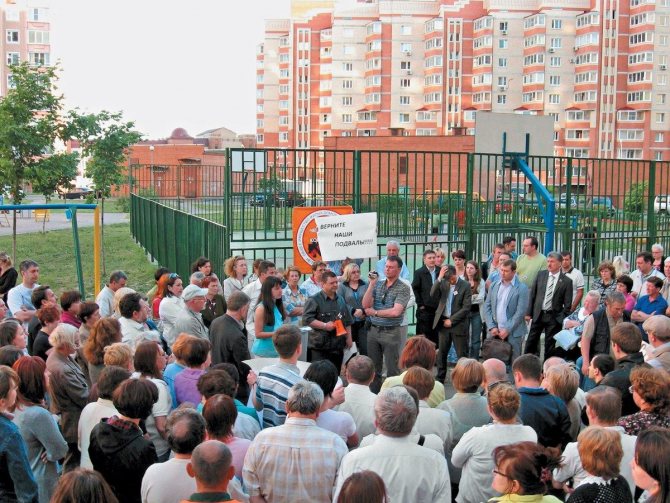
What is this?
The meeting of residents is a form of decision-making by the residents of the house regarding their common property and the life of the house as a whole. After all, the regulations state that common property is considered the property of all people living in a high-rise building. Based on this, each owner has the right to decide what to do with such property. However, in practice, most do not even suspect what exactly the allocated funds are used for and how they are actually used. Next, we will look in more detail at how meetings are held, what is decided at them and how to draw up competent minutes.
How the meeting is held
It was previously mentioned that there are two types of meetings: regular and extraordinary. The next meeting is held at least once a year. And the second type can be convened as needed, if such an initiative is expressed by at least one of the owners of square meters or a representative of the management organization.
There are two forms of organizing such an event:
- In person. It assumes the presence of all residents of the house. The main difficulty of such an event is to find a room that can accommodate everyone who wants to attend.
- Correspondence. It is carried out without co-owners by submitting written questions with the opportunity to vote individually on each of them.
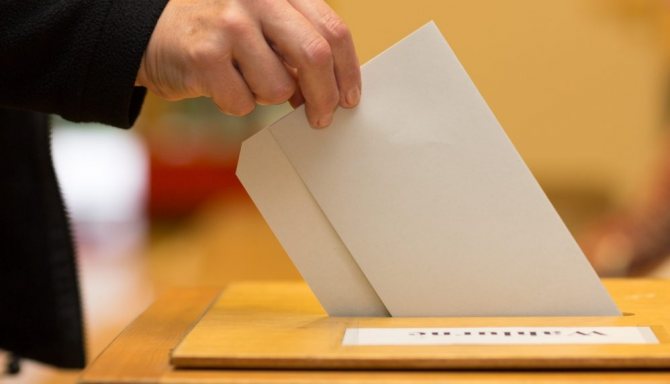
Apartment owners must be notified about the planned event 10 days before the event itself (no later). The notification is given by hand or sent by letter, but must be signed. In most cases, a corresponding announcement is additionally placed on the stand in the front room.
If there was no quorum at the meeting in person, voting may be transferred to absentee voting. At the same time, the standards do not establish clear deadlines for when it should take place; it is simply noted that it is carried out within a reasonable period of time, sufficient for preparation and organization.
Notice of upcoming meeting must contain the following information:
- indication of the initiator;
- form of the event;
- date/time;
- address;
- agenda;
- procedure for reviewing accepted materials.
All decisions are made through voting. It is primarily required that a quorum be present. It represents a sufficient number of residents who are authorized in the case in question. For housing legislation, this is more than 50% of the votes.
The number of votes of the owner depends on the volume of his part in the right of common ownership. To determine, you need to divide the area of the owner’s premises by the sum of square meters of residential/non-residential premises in the building.

What issues are being resolved
Meetings of owners of apartment buildings are authorized to determine the fate of the following cases:
- extensions and options for their expansion;
- exploitation of the local area;
- selection of responsible persons authorized to enter into agreements with individuals. and legal entities to make a profit from the local area;
- building repairs;
- selection of persons to maintain square meters, their protection, etc.
In addition, there are a number of aspects that require not a simple, but a qualified majority to resolve. These include:
- reconstruction of the building;
- methods of exploitation of the adjacent plot of land, setting restrictions;
- use of common property of the house, etc.
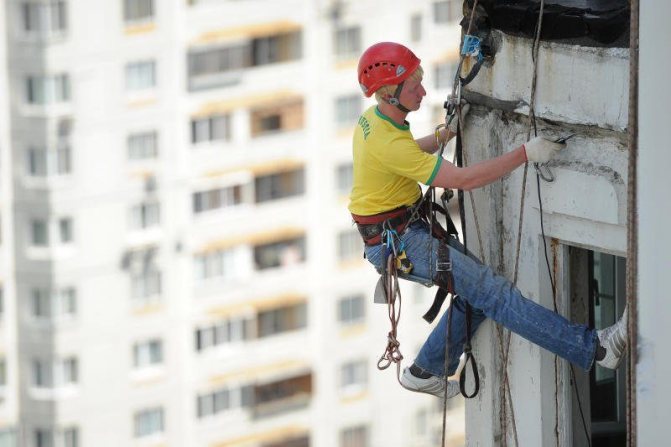
Instructions for drawing up a protocol
Data for drawing up minutes must be obtained before the start of the meeting. It all starts with compiling a register of residents, preferably indicating the area. It can be obtained from the developer, utility companies, or independently by asking when delivering the notice.
You will learn how to correctly draw up an agreement for shared participation in the construction of an apartment building on the next page:
Let's look at how to fill out the protocol points.
- Form of the meeting. The correspondence form is more convenient; it allows you to collect a larger number of decisions from residents over a certain period.
- Implementation time. Do not choose holidays and summer periods; it should be convenient for most residents. Residents are notified of the summons by signature or by registered mail with a list of enclosed forms.
- Place for submitting decisions.
- List the initiators with apartment numbers. These may be the owners, their representatives by proxy, management companies.
- Information about the total living area is taken from the technical passport of the house.
- The methodology for counting votes is not prescribed anywhere by law. It is considered correct to take the total area of all apartments as 100%. The percentage, calculated as the ratio of the area of a resident's apartment to the area of all apartments, will be the vote of this owner. In total, all calculated percentages must add up to 100%.
It is recommended to calculate the share using the formula:
Owner's share = area of the apartment according to the certificate * 100/area of all apartments of the owners.
For example, Petrov’s apartment = 50 sq. m., the area of the entire housing is 30,000 sq. m. m.
Petrov's share = 50*100/30000=0.1667%. It is recommended to round to the fourth decimal place.
Minutes of the meeting of homeowners
For the decisions made to have legal force in the future, it is not enough to hold a meeting. It is also necessary to correctly draw up the OSS protocol. It is the final document of the meeting, recording its results. It is drawn up in writing and signed by authorized persons.
When determining how to correctly prepare such documentation in 2019, it should be noted that there is no universal, generally binding format for the minutes of the general meeting of owners of an apartment building. However, despite the fact that the form of the protocol is free, there is information that must be written in the document. So, it says:
- Name;
- date and number;
- time and address of the meeting;
- what type of meeting of owners and its form (in-person or absentee voting of owners);
- content part (considering issues related to general house affairs, voting results of all residents);
- paper storage location;
- applications;
- signatures.

It is noted who led the event, the secretary records all this data. When the paper is drawn up, it must be brought to the attention of all residents of the house, including those who were not present at the meeting.
To understand what a well-written document looks like and what to write in it, you can download one of the samples presented below.
Chairman and secretary of the meeting
When determining how to keep minutes, it was previously noted that the minutes of the general meeting of homeowners must bear the signature of the chairman and secretary of the meeting. They are selected by open voting from among those present at the meeting. In this case, the first one conducts the event, and the second one’s task is to record everything and keep minutes of the owners’ meetings.
Counting commission
If it is necessary to make a decision by voting, a counting commission is created to count the votes. Its members are also chosen from among those present. Exactly how many people will be on the commission is decided by the residents themselves. As a rule, it includes several trusted people. It is best if it is an odd number, so that if something happens, the votes are not divided equally.
Members of the commission count the votes, which is ultimately reflected in the minutes of the meeting of residents of the apartment building.
Signatures of co-owners in the protocol of general fees
Signatures in the minutes of a meeting of building residents may only be required when the issue of creating a HOA and adopting its charter is being considered.
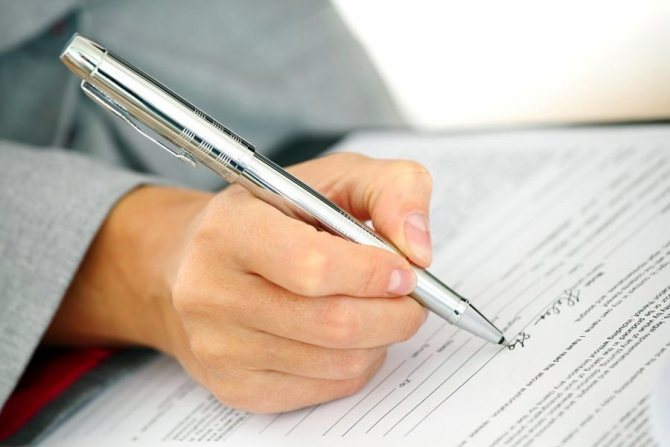
Information in the protocol
The minutes of the general meeting of owners of premises in an apartment building include the numbering of the issue under consideration, the name of the speaker, briefly the main points of the speech and the demands or proposals put forward.
Formulation of the meeting agenda
The minutes of the general meeting of residents of an apartment building contain everything that is on the agenda and requires consideration. It means all the issues that are planned to be considered at the meeting. If there are several of them, it is necessary to number them and arrange them in order of consideration.
The manner in which the agenda is presented should be clear, contain the essence of the issue under consideration, and also not allow it to be perceived ambiguously by the participants. You cannot include postulates of a general nature, for example, “Other”, “Miscellaneous”, etc., or combine questions of different meaning.

Owners do not have equal votes
Only persons who have ownership rights to apartments or their representatives (by law or by proxy) have the right to vote at a meeting of owners of residential premises. Such a meeting will be valid if more than half of the homeowners are present.
Votes are distributed in proportion to the ownership shares of the residents' common property. And it is already determined in proportion to the area owned by property rights. Accordingly, the owner of a four-room apartment has more votes than the owner of a one-room apartment in an apartment building.
Minutes form for the meeting of homeowners of apartment buildings
The collection and counting of signatures ends with the execution of a protocol. The current document template can be obtained from the local administration or you can use resources for downloading on the Internet. The main thing is that the paper complies with the provisions of the Order of the Ministry of Construction. Read the protocol form and download a well-written sample below.
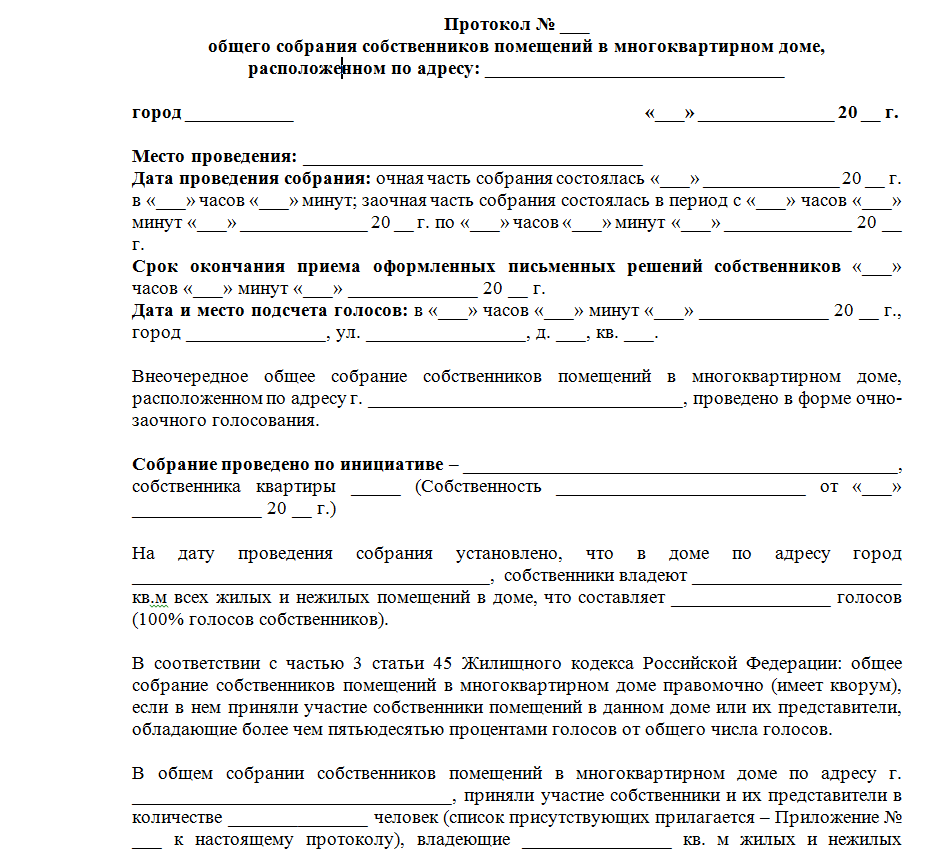
Appealing decisions
Referring to housing standards, the owner can challenge the decision of the meeting and the annex to the minutes of the general meeting of owners through the court if they violate legislative norms, provided that:
- he did not participate in the event;
- he opposed this decision;
- such actions violate his rights/interests;
- he voted, but his opinion was ignored.
The period given for appeal is six months from the moment the citizen learned or could have learned about such a violation. But no more than 2 years from the moment the decision became publicly available.
Registration of voting results
The voting results are recorded in the protocol. A sheet is attached to it, on which a number should be written; it is registered in the documentation maintained by the governing body. In this sheet you need to record:
- meeting organizers;
- apartment owners, indicating residential meters in use;
- voting by apartments;
- final result.
It is also necessary to record in the minutes all the issues that were put forward for voting. In each column opposite the data of the owner, his signature must be affixed.
Adopted decisions can be appealed within six months.
